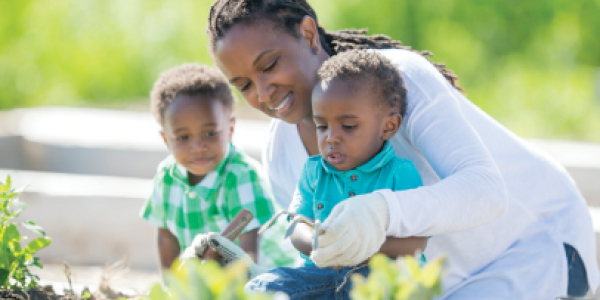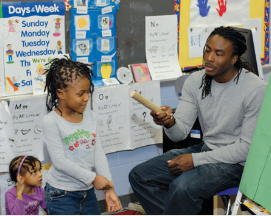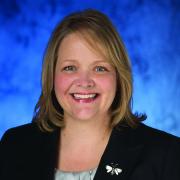Embracing Equity: Helping All Children Reach Their Full Potential

Close your eyes; what do you see and hear when we say the word gap? I’ll bet some of you hear opportunity. I’m sure some of you hear deficit. Some may go directly to achievement. Some may envision data. Some see systemic failure, and some see evidence of success.
The word is fraught. Whether we use the term achievement gap or opportunity gap—whether we focus on outcomes or inputs, families’ strengths or communities’ struggles—these debates are of importance. They are not questions of semantics. Precision in language matters; our choice of words has meaning. What we say about something sets the outlines for how we think about it and when (or if) we act on it. And yet it is also true that we do at times get too wrapped up in what we name something. While we debate the definitions, children grow a month or a year or a decade older—and disparities remain, regardless of the words we use to describe them.
By many measures of expectation, opportunity, or achievement, there are, on average, clear differences between children from low-income, African American, and Latino families and their wealthier, White peers. There are also many investments, methods, and approaches that can help eliminate these differences, some of which are explored by the extraordinary experts writing in the pages of this critically important issue of Young Children.
At NAEYC, anti-bias education has long been at the core of our work around race, social justice, equity, and diversity. Its very name can be misleading, as it is far more than a stand against something insidious. Rather, by its own description, anti-bias education advances a positive vision of a world in which all children are able to blossom, and each child’s particular abilities and gifts flourish.
 But as our country sits in moments of reckoning in so many ways, we find ourselves at NAEYC with a welcome opportunity to do our own reckoning—to look in the mirror and honestly assess and question our progress and our shortcomings. What have we done to close the gaps? Where have our policies and systems unintentionally widened them? How do we fix that? How do we support early childhood professionals to do their part? What can we do to make space for raw and difficult conversations? Where do we direct our resources? And importantly, as we move forward, what are we for?
But as our country sits in moments of reckoning in so many ways, we find ourselves at NAEYC with a welcome opportunity to do our own reckoning—to look in the mirror and honestly assess and question our progress and our shortcomings. What have we done to close the gaps? Where have our policies and systems unintentionally widened them? How do we fix that? How do we support early childhood professionals to do their part? What can we do to make space for raw and difficult conversations? Where do we direct our resources? And importantly, as we move forward, what are we for?
We, as an organization and a field, are working hard to answer all of those questions, but here is my answer to the last: NAEYC is for the active embrace of equity. We are for talking openly and honestly about diversity, and we are for changing our policies and practices to enhance our organizational commitment to being high performing and inclusive. We are for living these core values and beliefs:
- Recognize that children are best understood and supported in the context of family, culture, community, and society
- Respect the dignity, worth, and uniqueness of each individual (child, family member, and colleague)
- Respect diversity in children, families, and colleagues
- Recognize that children and adults achieve their full potential in the context of relationships that are based on trust and respect
- Advocate for policies, practices, and systems that promote full and inclusive participation
- Confront biases that create barriers and limit the potential of children, families, and early childhood professionals
We are for elevating a new diversity and equity position statement and related resources. We are for helping early childhood educators promote equity in early learning settings, even in the context of a diverse society that has not yet resolved its structural and institutional inequities. We are for working to resolve those inequities. We are for a stronger developmentally appropriate practice position statement that reinforces the importance of the social and cultural contexts that young children live in. We are for new resources on professional preparation that integrate a strengths-based approach to educating and caring for children from families of varying social, economic, cultural, racial, and linguistic backgrounds.
We are for supporting the implementation of assessments and assessment practices that are developmentally, culturally, and linguistically appropriate and relevant. We are for  an accessible and affordable higher education system that supports a pipeline of educators who reflect the families and communities in which young children live. We are for providing a platform that elevates a diverse range of authors and educators and advocates to share their perspectives. We are for engaging children, families, educators, and communities in our collective initiatives—including Power to the Profession—for listening to their ideas and for ensuring that policy makers take seriously their guidance and expertise. We are for being held accountable for our role in reducing disparities and in achieving the desired results that NAEYC’s Strategic Direction identifies, including
an accessible and affordable higher education system that supports a pipeline of educators who reflect the families and communities in which young children live. We are for providing a platform that elevates a diverse range of authors and educators and advocates to share their perspectives. We are for engaging children, families, educators, and communities in our collective initiatives—including Power to the Profession—for listening to their ideas and for ensuring that policy makers take seriously their guidance and expertise. We are for being held accountable for our role in reducing disparities and in achieving the desired results that NAEYC’s Strategic Direction identifies, including
- State and federal policies reflect comprehensive approaches to providing equitable access to highquality early learning, with particular focus on children living in poverty, multilingual children, children of color, and children with disabilities.
- Early childhood professionals are diverse, effective educators and leaders working within a compensation and recognition system that supports their excellence.
Our society created the circumstances that created the gaps; we are, therefore, collectively capable of eliminating them.
Gaps, whether definable by race, family income, or language, are not naturally occurring phenomena. They are not predestined to exist. Our society created the circumstances that created the gaps; we are, therefore, collectively capable of eliminating them. Even better, we are capable of going beyond them, such that the goal is not to compare and then catch one group up to another, but to set the bar higher for all. Every day, there are educators, families, and caregivers in centers, schools, homes, districts, and communities closing gaps and going beyond. The people doing this work, who are committed to seeing children both as individuals in their own right and as participants in the rich cultural and linguistic traditions of their families and communities, are able to build on strengths to help each young child thrive.
And that, in the end, is what closing gaps is about. If early childhood education succeeds in helping to level the playing field while ensuring that the American dream of equal opportunity is alive and well at kindergarten entry and sustained through the third grade, we will be doing nothing less than changing the world.
NAEYC is developing a position statement on diversity and equity and is also gathering feedback to update its position statement on developmentally appropriate practice. We are seeking guidance from a diverse array of early childhood educators and would love to hear from you. To get involved, please visit NAEYC.org/resources/ position-statements.
Rhian Evans Allvin is the chief executive officer of NAEYC. She is responsible for guiding the strategic direction of the organization as well as overseeing daily operations. Before joining NAEYC, Evans Allvin was a guiding force in Arizona’s early childhood movement for more than 15 years, including serving as CEO of Arizona's First Things First.
